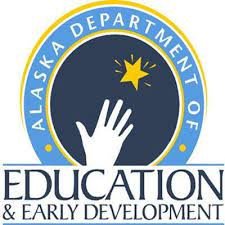As AI Chatbots Rise, More Educators Look to Oral Exams — With High-Tech Twist – By Jeffrey R. Young, EdSurge
Since the release of ChatGPT late last year, the essay has been declared dead as an effective way to measure learning. After all, students can now enter any assigned question into an AI chatbot and get a perfectly formatted, five-paragraph essay back ready to turn in (well, after a little massaging to take out any AI “hallucinations”).
As educators have looked to alternatives to assigning essays, one idea that has bubbled up is to bring back oral exams.
It’s a classic idea: In the 1600s it was the basic model of evaluation at Oxford and Cambridge (with the grilling by professors done in Latin), and it was pretty much what Socrates did to his students. And oral evaluations of student learning do still happen occasionally — like when graduate students defend their theses and dissertations. Or in K-12 settings, where the International Baccalaureate (IB) curriculum used by many high schools has an oral component.
But even fans of administering oral exams admit a major drawback: They’re time-consuming, and take a lot out of educators.

A ‘playbook’ to help Alaska schools hire and keep teachers – By Claire Stremple, Alaska Beacon
The Alaska Department of Education and Early Development has developed an online tool to help schools, districts, communities and elected officials address the state’s high rate of teacher turnover. It released the Teacher Recruitment and Retention Playbook in September.
The state began a working group to address teacher recruitment and retention in April of 2020. The group identified recommendations that have been compiled in the playbook.
Barbara Adams, a consultant for the state, worked on the recommendations. She said that after developing a series of insights on teacher hiring and retention, the group decided that including recommendations for everyone involved in education was crucial.
They came up with the playbook, an online document that is sorted by subject and includes potential actions that can be taken by different groups like school districts, communities, the state’s education department and legislators.
“It is a 50-page, linked Google Doc, which seems really big and maybe hard to get your head around,” Adams said. “But we’ve tried to build in the small links that allow you then to just access a smaller piece at each time.”

Nebraska Farm to School Network will help get local food to school cafeterias – By Lauren Wagner, Omaha.com
The Nebraska Department of Education and several state partners are launching a new program aimed at getting local farm food to school cafeterias.
The Farm to School Network involves the department, the Center for Rural Affairs and Nebraska Extension, plus organizations Buy Fresh Buy Local and No More Empty Pots.
A farm-to-school program is when schools serve locally grown or locally produced fresh foods — such as fruits, vegetables, eggs, honey and meat — to students, according to the Center for Rural Affairs.
Some Nebraska schools have already been participating in their own farm-to-school programs. Eight schools around the state were part of the Education Department’s Farm to School Institute during the 2021-22 school year. Each school received training and coaching about local food purchasing and agriculture.
Committee members will be representatives from organization across the state. The process will begin with mapping community assets, which will be the first step of the “Nebraska Farm to School Network Timeline,” according to the Education Department.

Lessons from work-based learning in Iowa schools could inform Legislature – By Grace King, The Gazette
Educators, businesses and colleges are partnering in Eastern Iowa to give more students the chance to explore careers while they still are in high school — and even graduate with apprenticeship experience and certificates.
Jeff Weld, executive director of the Iowa Governor’s STEM Advisory Council, learned about the work-based learning initiatives happening in the region at a roundtable discussion hosted last week by the Grant Wood Area Education Agency — part of a tour across the state to learn about these models.
Grant Wood AEA provides education services to seven counties in Eastern Iowa, including Linn, Johnson and Iowa.
Weld said Iowa employers are “desperate for employees.” Historically, employers have waited until people are 18 or 22 and have graduated high school or college to look at them as job candidates.
“By then, the talent pool has dwindled,” Weld said. “How many people graduate with a degree in computer programming? Only a few. But how many 12-year-olds might have chosen that field if they had been introduced to it in sixth grade?”
“If you’re an Iowa employer, you don’t want to meet (job candidates on) graduation night,” Weld said. “There’s fewer of them and the competition is intense. It’s a bidding war for talent.”












